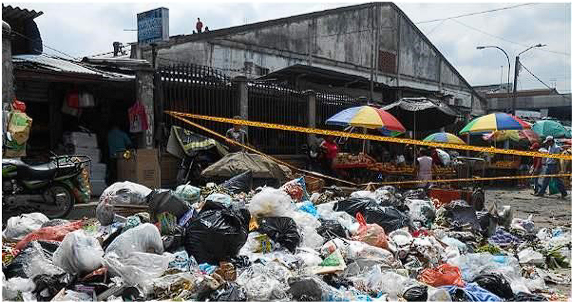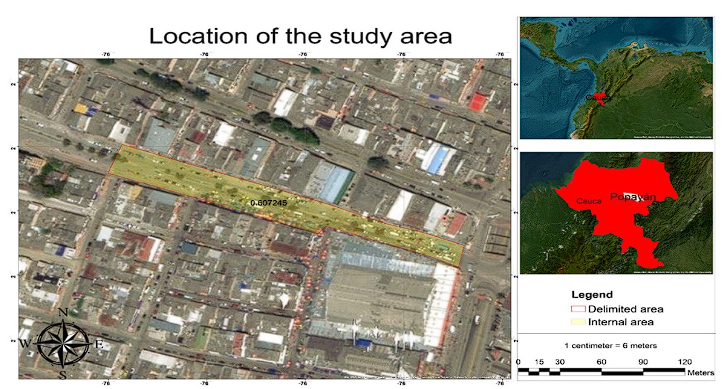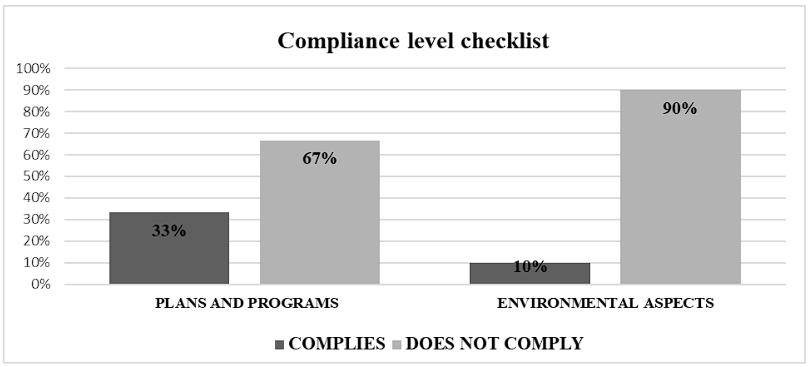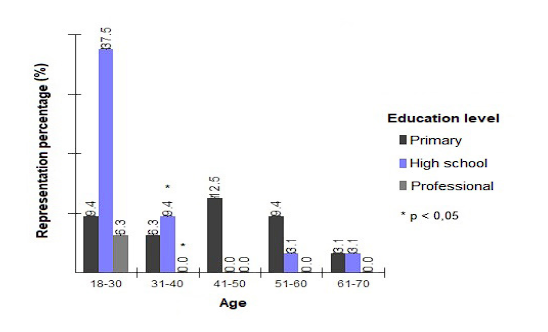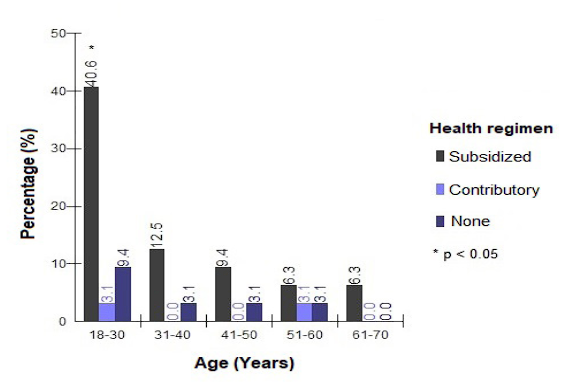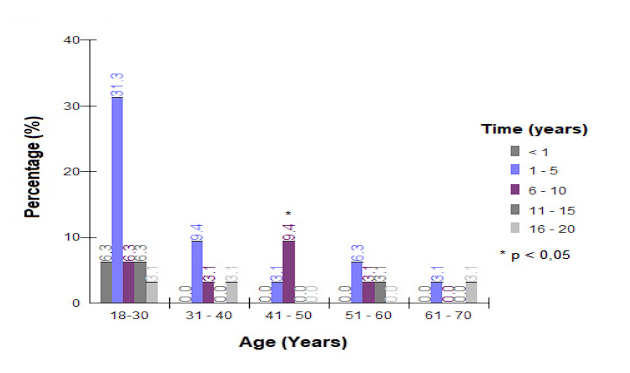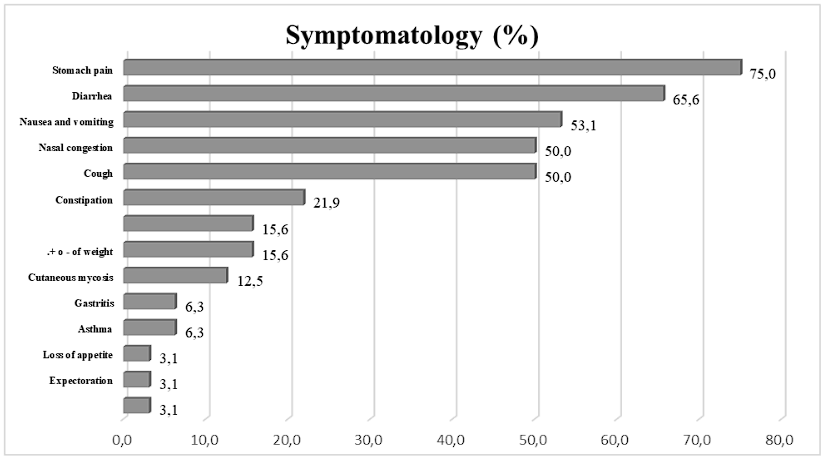Introduction
The planet is undergoing constant change, and the growth of urban areas poses significant challenges in achieving a sustainable development model for cities 1, by the year 2030, it is expected that 60% of the population will reside in urban areas 2, this development demands vast amounts of resources that are not fully transformed, leading to pollution in components and resulting in environmental issues linked to climate change, a decrease in quality of life, impact on public health, among other problems 3.
In Colombia, 51.41% of the waste generated is concentrated mainly in Bogotá with 20.5%, Valle del Cauca with 11.6%, Antioquia with 11.5%, and Atlántico with 7.71%, in 2018, waste was disposed of in 994 municipalities in authorized locations, while in 116 municipalities, waste continues to be disposed of in temporary cells and open-air dumps without the proper conditions 4. According to the Comprehensive Solid Waste Management Plan (PGIRS) for the Cauca department, more than a thousand tons of waste are produced every day. For the municipality of Popayán in 2022, the per-person production reached 0.89 kg/capita/day, with 51.4% being food waste, 11.6% plastic, 11.2% cardboard, and 8.4% paper 5.
Marketplaces or galleries are commercial places for supplying and exchanging agricultural products, aiming to provide goods for the family basket 6, however, these places experience environmental deterioration because their infrastructure is not designed for growth, mobility is difficult, access is lacking, and they face issues in waste management 7, as illustrated in Figure 1. According to the PGIRS of the Municipality of Popayán, the La Esmeralda market is identified as one of the critical points due to inadequate waste collection, temporary storage, insufficient cleanliness, and environmental education 5.
The issue is addressed from a descriptive approach, analyzing waste disposal, accumulation, discharge, rodent proliferation, flies, bacteria, and microorganisms, where various vectors and/or microorganisms are associated with pathologies 8, such as allergies, mucous membrane irritation, rhinitis, bronchitis, cutaneous mycoses, conjunctivitis, diarrhea, an increase in respiratory tract infections, among others 9. For this reason, it becomes necessary to diagnose the La Esmeralda market sector (Popayán-Cauca), focusing on identifying health symptoms in traders associated with the management of solid waste in this sector. Figure 1.
Methodology
In 2022, descriptive research was conducted with the aim of identifying symptoms and conditions in La Esmeralda Market (Calle 5 between Carreras 17 and 19) in the Municipality of Popayán, Cauca department, (2°26’42” N; 76°36’56,90” W), at an altitude of 1720 meters above sea level (Figure 2).
To carry out the investigation, methodological instruments such as checklists, surveys, interviews, and narratives with the sector's traders were utilized. The variables evaluated included sociodemographic information, the health status of the study sample, lifestyles, and the perception of risk due to the disposal of solid waste.
In the study area, a total of 126 establishments were identified, of which 73 were agricultural and livestock stores, and 53 were fruit and vegetable stalls located on Calle 5. The methodological instruments were applied to 32 traders, corresponding to the number of commercial establishments. The finite population equation was used to determine the number of establishments to visit 10.
Where:
n: Sample size
N: Population
P: Probability of success, event in favor (set at 50% for this study)
q: Probability of failure, event against (0.5)
Z: Confidence level 1.96 (Normal distribution for 95% confidence)
E: Expected error of estimation (set at 15% for this case)
Applying Equation 1 for La Esmeralda market, we have:
The application of methodological instruments was established in two phases:
I) Identified environmental components: to identify the affected components, a checklist was used (Annex 1), and the existence of plans and programs for solid waste management was observed.
II) Diagnostic Study: This was carried out through a survey applied to the traders in the sector (Annex 2), It was divided into 4 components: a) Sociodemographic information, b) Health status, referring to medical conditions experienced in the last year, c) Lifestyle, providing information about the habits of the respondents and their influence on any condition, affecting overall health; and d) Perception of risk, to understand waste management by the traders and their perception of risks due to exposure.
The information was systematized using Microsoft Excel and later imported into the BioEstat 5.0 program for the description of sociodemographic variables, waste management, and occupational health. The association of variables was performed using the Chi2 test.
Results and discussion
I) Identified Environmental Components
According to the checklist, it was found that there is a Solid Waste Management Plan (PGIRS) at the municipal level. This plan establishes the management of waste generated in this sector, collection schedules, and routes, and is available on the website of the Mayor's Office of Popayán 5, inquiries revealed that interviewees expressed: 1. Lack of awareness and dissemination of the PGIRS; 2. Some type of vector control program in the area. Regarding the component of environmental aspects, information was obtained about how waste is managed in the market, both by traders and the company responsible for providing cleaning services, as well as knowledge related to environmental education by traders (Figure 3).
According to the results in Figure 3, there is a non-compliance rate of 67% and a compliance rate of 33% for plans and programs. These percentages represent specific actions that should be implemented in the market for waste control, vector management, and program socialization. Regarding environmental aspects, there is a non-compliance rate of 90%, while only 10% show compliance. These data significantly reflect the organizational problem concerning environmental programs in La Esmeralda Market in Popayán-Cauca.
The issue of non-compliance with plans and programs, as well as environmental aspects, persists in markets across Colombia, as indicated by various analyses in different locations. An example is the environmental analysis conducted by Godoy Ortegón and Joya Suarez in local markets Doce de Octubre, Kennedy, and Trinidad Galán in Bogotá. This analysis identified several environmental impacts, covering aspects such as landscaping, waste management, discharges, odors, deficiencies in hygiene practices, and food handling, directly affecting health. The study highlights the need to update and implement specific programs to mitigate these impacts and improve environmental sustainability in these markets 11.
In the analysis by Álvarez and Santamaría, Plaza Guarín in Bucaramanga, along with other markets, is considered as tourist destinations. The conclusion is that, in comparison with some countries worldwide, Colombia fails to position markets as tourist attractions. Despite having diverse culture, gastronomy, and high-quality natural products from local farmers, critical areas demanding attention are identified. Infrastructure, security in markets, and stall arrangements require a considerable investment to meet international standards. Additionally, traders show a lack of interest in addressing these issues or obtaining training to improve them 12.
Studies by different authors in various markets across Colombia reveal common challenges in environmental management and the involved parties. In the "Formulation of an environmental management plan for Plaza Naranja market in the municipality of Funza," Barragán and Rojas point out that the relationship between the municipality responsible for market management and traders is quite distant, this is because traders lack information about decisions made regarding the overall operation of the place. Moreover, the municipality does not consider the market as a crucial strategic point for the municipality 13. This distance between administration and traders is also reflected in Plaza Hidalgo market in Granada Meta, where a proactive leadership and concrete actions by municipal administrations and environmental agencies are highlighted as necessary. The lack of planning and execution of waste management programs is a fundamental element for ensuring cleanliness and health in urban environments 14. This aligns with Álvarez and Santos, who talk about the low participation of traders, who play a fundamental role in the success of improvements. The risk of minimal or no participation by committee members is also mentioned, which could affect the effectiveness of proposed initiatives, such as campaigns and events. It is important to note that these risks are directly related to the collaboration of stakeholders in activities 15.
II) Diagnostic Study
The identification was carried out through a diagnostic survey conducted with the traders in the sector, obtaining the following results (Annex 2).
a) Sociodemographic Information
According to Figure 4, the traders fall within an age range of 18-70 years, with 43.8% being men and the majority represented by women at 56.2%, the higher representation of women is attributed to their participation as suppliers or their role as primary decision-makers in their households, opting for informal work without any benefits, solely for the possibility of having time to take care of their children 16. About 53.1% fall within the age group of 18-30 years, marking a significant difference at p < 0.05, this can be related to the increase in street Sellers, primarily due to the challenging economic situation affecting all Colombians, the lack of formal employment, and the absence of industry in the region. Among the 23 cities and metropolitan areas with the highest proportion of informality reported between November 2022 and January 2023, Popayán ranks 8th with 61.86%, according to a report provided by the Department of Statistics (DANE) 17. Another reason is that these occupations require little or no experience or qualification, making informal work an initial choice to increase income and become the primary source in households. The growing population and migrations to the capital of Cauca have generated a commercial dynamic that has led to the increase in the issue of informal employment, as it is seen as a favorable and accessible option for those who cannot find opportunities in the formal sector 18.
When evaluating the educational level of the respondents (Figure 5), it is observed that, on average, 40.7% of the surveyed individuals claim to have completed primary education, while 53.1% completed secondary education, and only 6.25% have a professional education. There is a significant difference at p < 0.05 in the age range of 31- 40 years, where some individuals state they completed secondary education, while others mention it as incomplete, this could be attributed to factors such as the distance from educational centers, where academic training was not considered relevant during that time, lack of economic resources, the necessity to work to support households, additionally, despite the existence of educational plans and programs in the 1980s formulated by various Colombian governments, education showed no signs of improvement in addressing the crisis in terms of financing, quality, organization, and coverage 19.
It can be observed in Figure 6 that 75% of respondents in all age groups are affiliated with the subsidized regime of the general social security system, this is because they do not have sufficient economic resources and fall within levels 1 and 2 of the System for Identifying Potential Beneficiaries of Social Programs (SISBEN) 20, representing approximately 47% of the Colombian population 21. The total percentage of surveyed traders not affiliated with any regime is 18.75%, according to a 2017 report from the International Labour Organization (ILO), these individuals lack social protection, labor rights, and decent working conditions 22, there are variables that prevent all Colombians from having access to the same quality of health services: such as place of residence, the existence of contracts and agreements between the Health Promoting Entity (EPS) and Health Service Providers (IPS). This highlights how the system stratifies Colombians once again 23.
When evaluating the time that sellers have been working (Figure 7), it is observed that 6.3% have been working for less than a year. 53% of individuals have been working between 1-5 years, and 40.6% of respondents have been working for more than 6 years, a significant difference at p < 0.05, this suggests that this activity may have allowed them to meet some basic needs in their households. However, it is also related to the increase in the population of the city of Popayán leading to higher unemployment, causing sellers to struggle in finding stable employment, according to the DANE population projections for 2018-2023 the population is expected to increase from 318,059 inhabitants in 2018 to 333,382 in 2023 24. On the other hand, respondents who have remained in the market for 6-20 years have been exposed to the issue of poorly managed waste for a much longer period.
In the market, the stalls supplying fruits and vegetables stand out along Calle 5 as a source of informal employment. According to the ILO, informal work is defined as low-paying work that is not formally registered, protected, or regulated, this implies that informal workers lack secure employment contracts, social protection, and labor benefits 25, authors like Fernández have explored the concept of informality, defining four types. The first refers to those who wish to work in the formal sector but are marginalized from the labor market due to low productivity levels, the second type is voluntary informality, where individuals believe that the benefits of working in the informal economy outweigh those of formal employment. Induced informality, the third type, involves individuals intending to secure formal employment and be productive, but labor barriers exclude them, highlighting discrimination. Finally, the fourth type is mixed informality, which involves workers with very low productivity expressing a certain preference for the informal economy 26. On the other hand, traders in the informal sector of marketplaces endure long working hours, inadequate remuneration, and work in environments that can affect health and safety 27.
b) Health Status
In the second component of the survey, inquiries were made about the history of illnesses in the last year, according to the results obtained, 46.9% of the respondents reported having experienced some illness during this period, while 53.1% have not. Moreover, 75% of the participants reported having suffered from gastrointestinal problems, while 25% have not experienced them. It is noteworthy that these questions are not related to illnesses associated with Covid-19, as some symptoms may be confused with this virus.
Figure 8 shows that, according to the information reviewed, some of the symptoms are closely related to poor waste disposal. Gastrointestinal symptoms are the most frequent at 75%, followed by diarrhea at 65.6%, and nausea or vomiting at 53.12%. These issues can be caused by viruses, bacteria, and fungi 28. Due to contact with infection sources or vectors transmitting microorganisms affecting humans, by ingesting food at their workplace without minimal hygiene measures, and by not washing their hands adequately and frequently, their food is exposed, and the place does not provide a safe environment. Therefore, it becomes a vehicle for microorganisms. The respondents reported experiencing common symptoms such as diarrhea, stomach pain, being exposed to different biological factors, making them a vulnerable population for contracting diseases.
In the issue of improper temporary waste disposal in La Esmeralda market (Figure 9), there are conditions that can pose a health risk due to exposure to vectors such as rodents, dogs, scavenger birds, and insects, frequent contact with these vectors during work increases the biological risk, causing various diseases such as tetanus, parasitic infections, and an increased risk of rabies through bites that allow microorganisms to enter through contact with wounds on the skin, saliva, or other secretions 29. This aligns with what López and Purihuamán stated about the environmental impact produced in a hamlet in the city of Chota by the solid waste dump, according to air quality monitoring, the inappropriate location of waste accumulation negatively impacts an approximate radius of 100 meters around the dump, affecting nearby populations' health 30, this is supported by what Castro expressed in his thesis "Proposal for a sustainable model for the management of organic solid waste in the district of Huanta, Ayacucho, Peru," where he indicates that the inappropriate location of dumps causes difficulties in local economic development 31. In the case of La Esmeralda market, traders who are closer to the site where waste is disposed tend to experience more respiratory and gastrointestinal symptoms, based on the report on occupational diseases in personnel responsible for solid waste management in Tulcán, authored by González Pañora, where epidemiology experts state that the accumulation of waste in open areas can cause various respiratory, gastrointestinal, and fungal pathologies 32.
c) Lifestyle
In Table 1 the results corresponding to the third component of the survey can be observed, 62.5% of the respondents indicated that they do not smoke, while 59.4% do not consume alcohol, this could be due to the majority of respondents being female and having demanding work all 7 days of the week, which reduces the possibilities of consumption. It is important to highlight that people between 18 and 30 years old, representing 25%, do consume alcoholic beverages, which can result in health risks. In the short term, cases of intoxication can occur, while in the long term, chronic diseases such as heart problems, high blood pressure, liver issues, cerebrovascular accidents, digestive problems, mental health issues, and even cancer of some type can arise 33.
Regarding the type of diet, 71.9% of respondents claimed to include fruits and vegetables. This suggests that they are more interested in the nutritional benefits these foods provide for health, so they include them in a balanced diet and lifestyle 34.
Table 1 Lifestyle
| AGE (years) | Smoking (%) | Alcohol Consumption (%) | Inclusion of Fruits and Vegetables (%) | |||
|---|---|---|---|---|---|---|
| SI | NO | SI | NO | SI | NO | |
| 18-30 | 21.9 | 43.8 | 25.0 | 21.9 | 37.5 | 3.1 |
| 31-40 | 0.0 | 6.3 | 6.3 | 12.5 | 12.5 | 6.3 |
| 41-50 | 12.5 | 3.1 | 6.3 | 6.3 | 6.3 | 9.4 |
| 51-60 | 3.1 | 6.3 | 3.1 | 12.5 | 15.6 | 6.3 |
| 61-70 | 0.0 | 3.1 | 0.0 | 6.3 | 0.0 | 3.1 |
| Totaly | 37.5 | 62.5 | 40.6 | 59.4 | 71.9 | 28.1 |
Source: Authors.
d) Risk Perception
In Table 2 it can be observed that 62.5% of respondents answered affirmatively to the question about awareness of the problem and the purpose of a solution aimed at the correct management of solid waste produced by the activity carried out in the market.
Regarding the importance of proper management of all solid waste generated in this area, a key question for the problem, it is evident that many people envision a work area with a virtuous environment. This is reflected in question D, where 62.5% of respondents disagree with the location and manner of storage of the waste generated in the area, although employees in the sector have submitted requests to government institutions without obtaining a response to their needs.
Table 2 Risk Perception
| Variable | SI(%) | NO(%) |
|---|---|---|
| A- Is it important to properly manage solid waste within your business and in general in the market? | 62.5 | 37.5 |
| B- Do you separate solid waste according to its characteristics (organic - inorganic)? | 34.4 | 65.6 |
| C- Do you observe that the temporary disposal of waste in the market is appropriate? | 37.5 | 62.5 |
| D- Have you regularly observed the presence of flies, rats, or other infectious animals in the market? | 46.9 | 53.1 |
| E - Do you consider solid waste to be a problem for the Sellers of La Esmeralda Market? | 65.6 | 34.4 |
| F- Have you received any training to manage waste properly in your business? | 34.4 | 65.6 |
| G- Do you think a waste utilization program is necessary for the waste generated in the market? | 50 | 50 |
| H- Do you agree that people should be aware of the problems caused by solid waste in La Esmeralda Market? | 100 | 0,0 |
The 65.6% of respondents do not separate waste and have not received training on proper waste separation, indicating that the issue reflects a lack of knowledge, environmental education, and culture, in this context, personal interests outweigh the common good, and the merchants are not willing to be involved in improving the sector, they expect the waste management service provider or responsible entities to solve the problem without committing themselves, highlighting an obstacle resulting from the lack of environmental education. Based on the report "Environmental education for safety and health at work as a transformative agent of culture in markets," it emphasizes the importance of environmental education from an early age, promoting awareness and environmental responsibility regarding waste management from the classroom 35.
Half of the respondents (50%) indicated the need for a waste utilization program and feel uncomfortable with the situation, however, they do not want to be involved in the permanent solution to the problem, perceiving it as something normal, everyday, and harmless to their well-being, this perception is influenced by their belief that they have knowledge and control over the situation 36. This aligns with Slovic's research, which found that occupational risks are easily accepted when linked to activities considered beneficial in terms of economic remuneration for workers, seeing them as inevitable in their work 37, workers weigh the benefits and risks, emphasizing that their work provides a quality of life for themselves and their families, minimizing the perceived risks.
The identification of symptoms due to the type of environment they are in, such as biological risks, poses unsafe conditions that, with prolonged exposure, are conducive to developing symptoms that can harm the entire population, both traders and customers, however, the most concerning aspect is that people are not aware of the risks involved, they feel secure in their workplaces, associating higher sales or income but do not link the state of their workstations to potential health risks. According to the International Labour Organization (ILO), it is essential to consider work as a healthy environment, from a decent work perspective 38, to ensure this situation, it is crucial to recognize the elements that represent risks to safety and health, covering ergonomic, physical, biological, chemical, and psychosocial factors 22.
Markets are an essential part of the population's supply, preferred over supermarkets; however, hygiene and organization need to be changed and managed appropriately to prevent social, environmental, and health problems. Adequate management and support from entities or organizations responsible for the environment and health are recommended. Risk perception in the workplace is crucial to understanding irregular practices in the environment, creating safe environments to take preventive measures against the risks to which one is exposed. While customers and visitors generally spend little time in the market, they highlight its lack of organization and the existing problems, whereas workers consider it safe due to its familiarity. Regulations and supervision of compliance with standards must be effective to make visitors feel safer and confident when purchasing products. They should also include preventive measures in informal work to improve the health quality of informal traders.
Conclusion
In the diagnosis of health symptoms and waste management in La Esmeralda market, it is noteworthy that 75% of traders reported experiencing gastrointestinal symptoms, followed by respiratory system symptoms, posing a health risk, according to reports from similar studies, these symptoms could be associated with the improper management of solid waste. There was evident exposure and frequent contact with vectors during work, increasing the biological risk, along with a lack of occupational safety management and non-compliance with environmental programs and plans in the market.
It is clear that the lack of job opportunities in the city of Popayán is one of the main causes for the increase in informal work among individuals aged 18 to 40, this is particularly prominent in marketplaces, with a majority representation of women, often heads of families, the lack of access to higher education and subsidized health care for the lowest socioeconomic strata 1 and 2 is primarily driven by economic factors in a city that has one of the highest unemployment rates in the last three years, this reflects a social problem contributing to the pursuit of informal work from an early age.
Regarding lifestyles, a high percentage of traders include fruits and vegetables in their daily diet; however, a point to address is alcohol consumption and smoking habits among individuals aged 18-30. More than half of the traders have not received training for waste management; however, they perceive health risks due to improper waste handling, hygiene habits, and occupational safety. Therefore, it is recommended to implement continuous environmental education strategies for traders and the general population. The aim is to transform behaviors, generating a change in each individual, their environment, and working conditions, making them feel part of the solution. Additionally, providing guidance to improve their health conditions in the face of solid waste exposure, promoting self-care, cultivating habits that reduce vulnerability to diseases, and alleviating symptoms will contribute to enhancing the health of traders. Commitment and management are crucial for government entities overseeing the environment and health to design and implement preventive occupational health programs, these programs should contribute to better waste management at sales points and improve the quality of life for exposed communities.














